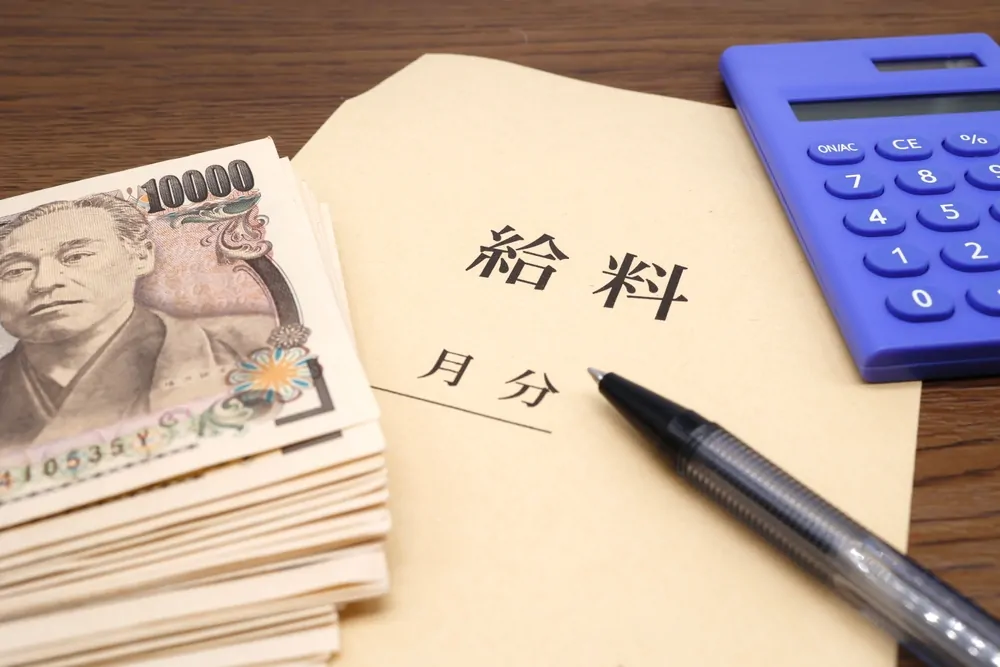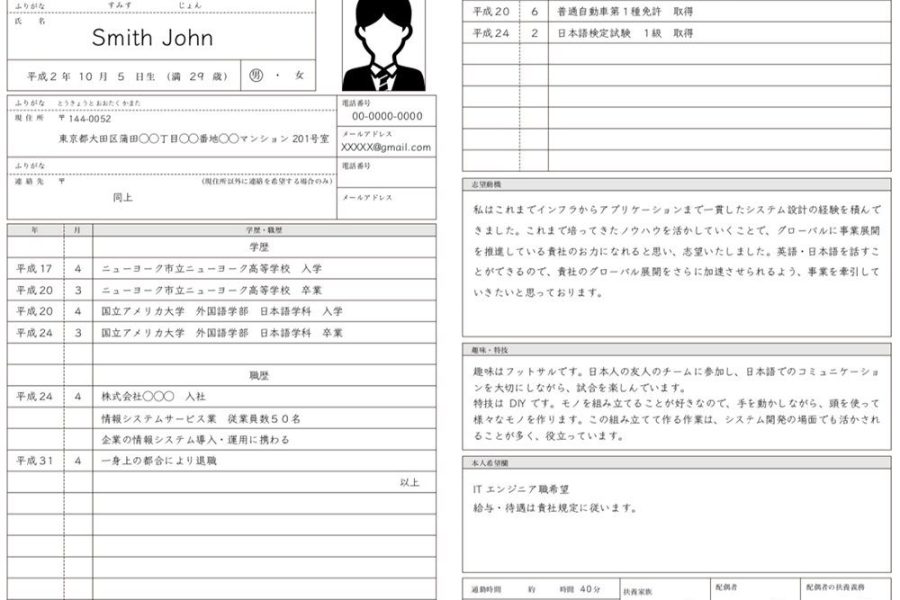Japan is the third-largest economy worldwide and a significant driver of technological innovation in everything from automobiles to electronics.
Take Honda, Nissan, and Toyota in the automotive industry or Sony and Sega in electronics. Or consider Nikon and Canon cameras, Yamaha musical instruments and motorcycles, Kawasaki and Suzuki motorbikes, and Yokohama and Sumitomo tires.
The island nation represents an excellent place to expand your business and an emerging market for outsourcing expertise. Foreign workers in Japan need not be highly proficient in Japanese to succeed; a command of English and the technical skills required by Japanese industry mean that there is an opportunity for foreigners to find work here. Nevertheless, Japanese language proficiency is helpful in getting a job and in relations with colleagues, managers, and clients.
Conversely, you may be considering outsourcing to Japan. For example, an increasing number of call center operations are offshoring here as younger Japanese gain fluency in English. Japanese culture is known for prioritizing education and a dedicated work ethic.
So, while you will have to pay relatively high salaries to employees in this nation, you will get your money’s worth.
Let’s look at the average salary in Japan, how it varies between regions, and how industry, education, and experience influence it. We’ll also guide you on the (roughly annual) increments in pay to incentivize Japanese workers and the benefits of outsourcing employment to Japan.
Defining the Average Salary in Japan
The average monthly salary in Japan in 2023 is around 515,000 JPY (Japanese yen) or $3,962 in US dollars.
However, this way of defining the average salary in Japan is pretty meaningless, as it is calculated from a range going from around 130,000 JPY ($1,000 US) to 2,300,000 JPY ($17,692 US), with some earning even more.
The median as a measurement of the average salary in Japan is more helpful, as it indicates the midpoint of Japanese employees’ earnings. Half the working population earns less than 545,000 JPY per month; half makes more.
Basing a wage offer on the median for a particular job category is likely to be seen as fair by employees (bearing in mind other factors that affect pay, such as education and experience).
Before examining the average wage in Japan for various sectors, let’s consider the cost of employing entry-level workers, such as high school graduates or people holding basic diplomas, who you might want for work such as customer service or human resources.
The minimum salary varies from region to region, but expect to pay your least-skilled Japanese employees between 137,600 JPY to 156,160 JPY ($1050 to $1192 US) per month.
It is also worth noting that many Japanese employers pay 18 months per year and provide additional perks, such as paid commuter passes and subsidized accommodation, which can add between 30 and 50% to an employee’s actual income.
This is permissible by local tax law and encouraged by social custom, a powerful force in Japan. Employees who remain loyal to the same employer long-term can also get substantial lump sum payouts.
Average Salary in Japan for Specific Industries
Let’s look at the average annual salary in Japan for some jobs in various sectors. These are median values in the Japanese yen. (The exchange rate with the US dollar fluctuates but was around 131 JPY/USD at the time of writing.)
Medicine and Healthcare
- Dentist: 17,040,993
- Doctor: 21,621,444
- Pharmacist: 11,843,574
- Registered Nurse: 7,463,300
Finance and Accounting
- Chief Financial Officer: 18,474,231
- Business Analyst: 8,246,536
- Bookkeeper: 3,993,718
- Bank Teller: 2,822,102
Manufacturing
- Electrical Engineer: 10,185,513
- Mechanical Engineer: 9,222,332
- Lathe Machinist: 6,520,562
- Automotive Mechanic: 4,135,445
Science and Technology
- Software Engineer: 9,985,766
- Biologist: 7,047,669
- Physicist: 10,573,571
- Chemical Engineer: 10,108,073
Real Estate and Construction
- Real Estate Agent: 5,721,899
- Property Developer: 6,760,412
- Building Contractor: 9,937,554
- Bricklayer: 5,348,795
Media and Advertising
- Journalist: 9,425,978
- Marketing and Promotions Manager: 7,162,854
- Graphic Designer: 5,618,908
- Copy Writer: 6,322,351
Service Industry
- Call Center Operator: 3,058,913
- Customer Service Representative: 3,654,730
Education
- Principal: 8,438,435
- Secondary School Teacher: 5,549,731
- Nursery Teacher: 1,998,878
Law
- Judge and Magistrate: 8,930,585
- Attorney: 13,412,889
- Legal Clerk: 5,347,974
Retail and Restaurants
- Retail Store Manager: 5,278,799
- Cashier: 2,361,309
- Waiter: 2,615,402
The Effect of Education on Average Salary in Japan
The more educated a Japanese employee is, the higher the salary they can command.
A high school graduate would probably earn the minimum wage, whereas a college graduate or someone with a diploma would earn around 17% more. A bachelor’s degree typically makes earnings 24% higher than diploma-educated individuals.
These effects only increase with post-graduate education: a master’s results on average in earnings 29% higher than for bachelor’s degrees, while a doctorate (Ph.D.) leads to a further 23% jump over those with a master’s.
However, the precise effect of higher educational achievements varies between industries.
Average Salary Increments for Specific Industries in Japan
Employees in Japan are given regular appraisals (around every 16 months), which generally lead to salary increments to incentivize experienced personnel to remain with the company.
These increments vary between industries, ranging from 2% in education to 8% in banking, with healthcare being the average, around 5%.
Increments also vary based on seniority, with junior personnel earning increments of 3 to 5%, mid-career individual increments of 6 to 9%, senior employees 10 to 15%, and top management 15 to 20%.
However, the fortunes of the nation’s economy, region, industry, and companies will affect these figures. At around five to ten years into their careers, individuals typically earn the highest percentage increments in salary, and after 20 years in industry, increments decline considerably.
Nevertheless, Japanese employees typically realize their highest earnings in their fifties.
Overall, more experience generally equates to a higher salary. However, the average wage in Japan for two individuals with the same experience can differ considerably based on qualifications, job performance, industry, and region.
When deciding what increments to give to a Japanese employee, we recommend considering the median salary for someone with comparable qualifications and experience in your particular industry rather than a blanket figure.
A point of interest for foreign employers: many Japanese companies require their employees to retire or semi-retire when they turn 60. However, the Japanese pension system only starts paying when people reach 65, resulting in retired employees looking for part-time jobs.
Minimum Wage and Work Week
The average salary in Japan varies between regions and cities, according to the strength of regional economies. Each area has a Regional Minimum Wage Council that sets the minimum wage for each prefecture.
The national average for the minimum hourly wage increased from 930 JPY/hour in 2021 to 961 JPY/hour in October 2022, based on the 40-hour work week. If employees work overtime, this is paid at a higher hourly rate as stipulated by the Labor Standards Act of 1947.
Thanks to a greater density of businesses, the highest minimum wage in Japan is in Tokyo, and it was 1,072 JPY/hour in 2022, comparable to cities such as Hong Kong and Seoul.
Any person earning more than the base level of [1,950,000 JPY/year (162,500 JPY/month)] must pay tax to the Japanese National Tax Agency.
The Regions and Cities of Japan
Japan has four main islands, the largest of which is Honshu, divided into the five regions of Tohoku, Kanto, Chubu, Kansai (Kinki), and Chugoku, in order from northeast to southwest.
The other three main islands (Hokkaido to the north and Shikoku and Kyushu to the south) are considered regions in themselves. Okinawa and the other Ryukyu islands are also part of Japan. Still, you are unlikely to be interested in them unless your business has dealings with the US military personnel stationed there.
Note: there are multiple ways in which the Japanese government and institutions allocate the 47 prefectures (official administrative areas) to regions, so the breakdown given here is only approximate.
Average Salaries in Japan by Region and City
Examining the different regions of Japan, their major cities, and the minimum wage in each region, we see the following trends for the monthly average salary in Japan.
Hokkaido
- Average Salary, Sapporo (2022): 488,672 JPY
- Minimum Wage in Hokkaido (2022): 920 JPY/hour
This frontier region’s economy is based on agriculture, forestry, and coal mining. In addition, many people work in the telecommunications industry.
Tohoku
- Average Salary, Sendai (2022): 439,438 JPY
- Minimum Wage in Tohoku (2022): 859 JPY/hour
This rugged northern region has great natural beauty and a harsh climate. Its economy is based on tourism and some manufacturing (steel, concrete, petroleum, etc.), so it is also unlikely to be the first choice for outsourcing human resources.
Kanto
- Average Salary, Tokyo (2022): 574,000 JPY
- Average Salary, Yokohama (2022): 564,000 JPY
- Average Salary, Kawasaki (2022): 495,000 JPY
- Average Salary, Saitama (2022): 486,000 JPY
- Minimum Wage in Kanto (2022): 976 JPY/hour
This southeastern region of Honshu, centered on the Kanto Plain, is the economic hub of Japan, containing roughly a third of the nation’s population, and Tokyo, both the capital and the largest city economy worldwide. It is highly developed and home to light, heavy, and automotive industries.
Many highly innovative IT and electronics companies have their headquarters here.
Chubu
- Average Salary, Nagoya (2022): 545,000 JPY
- Average Salary in Other Chubu Cities (2022): 790,272 JPY
- Minimum Wage in Chubu (2022): 914 JPY/hour
This central region of Honshu is where the Japanese Alps divide the island in two. As a result, the area is less developed than Kanto or Kansai. Still, the spillover of industry, and its central location between these two historical centers of Japan, make it meaningful and worth considering.
The greater Nagoya area (sometimes called the Chukyo region) boasts the third-largest economy in Japan and is still growing.
Kansai (Kinki)
- Average Salary, Osaka (2022): 555,000 JPY
- Average Salary, Kobe (2022): 531,778 JPY
- Average Salary, Kyoto (2022): 505,000 JPY
- Minimum Wage in Kansai (2022): 942 JPY/hour
This south-western region of Honshu houses the Keihanshin area (the major cities of Osaka, Kobe, and Kyoto) that forms the second most-populated area of Japan, and a significant economic powerhouse, especially in the chemical and metal industries, plus many medical and electronic companies.
Chugoku
- Average Salary, Hiroshima (2022): 476,000 JPY
- Average Salary, Okayama (2022): 385, 744 JPY
- Minimum Wage in Chugoku (2022): 871 JPY/hour
This far western region of Honshu is also called the Sanin-Sanyo region to avoid confusion with China (written with the same characters as Chugoku). Apart from the industrial metropolis of Hiroshima, rebuilt after the atomic bomb destruction in 1945, the region is sparsely populated and agricultural.
Shikoku
- Minimum Wage in Shikoku (2022): 860 JPY/hour
Although this island lies just to the south of the inland sea and thus close to the Greater Tokyo/Kanto megalopolis, it is rural and sparsely populated, with citrus farming being the main economic activity. It is highly unlikely that foreign companies would wish to outsource here.
Kyushu
- Major Cities: Fukuoka, Kitakyushu, Kumamoto, Oita, and Nagasaki.
- Average Salary, Kyushu cities (2022): 433,540 JPY
- Minimum Wage in Kyushu (2022): 860 JPY/hour
The southernmost of the major islands of Japan, Kyushu, has a subtropical climate in the predominantly agricultural south. The northern cities house automotive, chemical, shipbuilding, and semiconductor industries.
Benefits of Outsourcing Employment to Japan
Japan is the third-largest economy, with a GDP of $6.1 trillion US in 2022. Furthermore, 53 of the Fortune Global 500 companies have their headquarters here, especially companies of Japanese origin.
While the Covid-19 pandemic caused a downturn in the economy, it recovered well in 2022 and shows signs of growing even more in 2023.
There are opportunities for skilled job seekers in this nation, particularly if they have Japanese language proficiency. And if you want to outsource functions to Japan, you can rest easy that you will hire well-educated and hardworking employees.
You’ll pay quite a bit, especially for highly-skilled or experienced professionals, but you will get good value.
The Takeaway
We concede that the idea of an average salary in Japan is too vague to be helpful to a jobseeker or employer. However, knowing baseline pay rates, averages for various industries, and the effect of region, education, and experience will give you a better idea of what is appropriate for a particular position.
Whether you want to relocate to Japan or outsource there, this nation may be the perfect fit for your employment needs.





The Japanese Statistical Year Book 2023 shows that the total monthly cash earnings on average was 319,461 Yen (p.440). Cash earnings are the salary before tax and mandatory contributions. “Cash earnings are the amount before deducting income tax, social insurance premium, trade union dues or purchase price, etc. It includes contractual earnings and special cash earnings.” (https://www.mhlw.go.jp/english/database/db-l/m-explanation.html). What accounts for the differences between your figures and those of the Year Book?